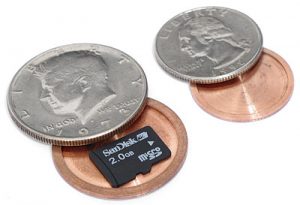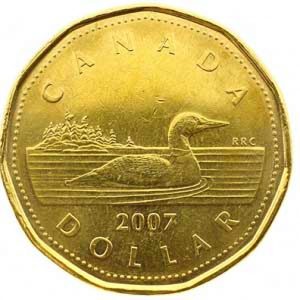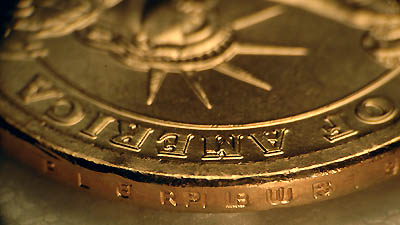Weekly World Numismatic News for October 31, 2021
 Today marks the 16th Anniversary of the Coin Collectors Blog. When I started this blog, I did not know if I had enough to write about. But numismatics has had many twists and turns over the years to keep the hobby interesting. As long as there is something to write about and you are willing to read it, I will keep going. Here’s to the last 16 years and more fun in the future. Thank you for being a loyal reader!
Today marks the 16th Anniversary of the Coin Collectors Blog. When I started this blog, I did not know if I had enough to write about. But numismatics has had many twists and turns over the years to keep the hobby interesting. As long as there is something to write about and you are willing to read it, I will keep going. Here’s to the last 16 years and more fun in the future. Thank you for being a loyal reader!Collectors are reporting that they received their orders of 2021 Morgan and Peace Dollars. Deliveries have come in waves where some have received multiple packages over two weeks.
A few collectors have noticed differences in the finish between different coins. A local collector showed me the difference between a Morgan Dollar with the CC privy mark and a 2021-S coin. The coin struck in San Francisco had a cloudier look. The Philadelphia Mint struck the Morgan Dollars with the privy marks.
A Canadian friend reported receiving colored Bluenose 10-cent coins in change. There is a general consensus that Canadians love the coins. One story included a cashier who was excited to open a roll of the new coins and took joy in giving them out.
Someone I know who is a member of the U.S. military had his post changed to the Pacific. As part of his tour, he went to Australia, where he discovered the alphabet coins. The Royal Australian Mint created 26 new designs with reverses featuring something Australian for each letter of the alphabet. The program, dubbed The Great Australian Coin Hunt 2, follows the 2019 program.
He was so impressed with the coins that He mailed a set of the 2019 and 2021 coins home for his children. When I told him that the Royal Mint released a similar set in the U.K., he said he might try for a tour in the North Atlantic to pick up a set.
There are a lot of interesting world coins to explore. Collectors may want to branch outside the U.S. and start a new collection.
And now the news…
 → Read more at nypost.com
→ Read more at nypost.com
 → Read more at learningenglish.voanews.com
→ Read more at learningenglish.voanews.com
 → Read more at abc.net.au
→ Read more at abc.net.au
 → Read more at klewtv.com
→ Read more at klewtv.com
A LOOK BACK: When is a Variation Not a Variety
If you search the online auction sites, you will find less than honest sellers trying to sell variations in the positioning of edge lettering of the new George Washington Dollars errors or varieties. Letters that are pointed up, or the top of the letters towards the obverse, are considered “normal” by these sellers. Letters that are pointed downward, or the top of the letters closer to the reverse of the coin, have been called errors or varieties. They are neither.
Exasperating the issue is that one third-party grading service added a designation to their labels with the orientation of the edge lettering.
- According to one third-party grading service, Presidential Dollars With The Tops The Edge Lettering Facing the Reverse Are Designated As “Position A.”
- Those With The Tops Of Their Letters Facing The Obverse Are “Position B.”
An accepted definition of a variety “is any variation in the normal design of a given coin, usually caused by errors in the preparation or maintenance of the coin dies.” They are also errors caused in the striking process. But these definitions do not account for the differences in the orientation. The problem is that after the planchets are struck into coins by the high-speed coining machines, they are mechanically collected and fed into a machine that will press the lettering into the edge of the coins.
The machine that adds the edge lettering uses a three-part collar to impress the incuse lettering does this without regard to position. not only could the edge lettering face any direction, but the lettering can appear at any position along the edge. The U.S. Mint confirms this by saying that because of “the minting process used on the circulating coins, the edge-incused inscription positions will vary with each coin.”
Since the Mint is saying that the process can vary, these variations are normal for the design. Since these are normal variations, they are not numismatic varieties or errors. Thus, the coins with variations of orientation edge lettering are not worth the premiums being sought online. They are worth their face value of $1.
There have been errors found with the edge lettering. The most infamous has been called the “Godless Dollars” for coins missing their edge lettering and the motto “In God We Trust.” Most of these coins were minted in Philadelphia and discovered in Florida. Others have found doubling of edge letters and what looks like breaks in the three-part collars where letters have moved out of place. These are legitimate errors and worth a premium above face value. Orientation variations of the edge lettering are not errors.
If you want to consider these varieties, please save your money and visit your local bank. You can purchase these coins for face value without shipping and handling fees. If you purchase a 25-coin roll, you can spend the coins you do not want since they are legal tender.
July 2018 Numismatic Legislation Review

Augustus Saint-Gaudens National Historic Site
(Image courtesy of the National Parks Service)
The Saint-Gaudens National Historical Park Redesignation Act does not add a commemorative coin program but it changes the designation for the Saint-Gaudens National Historic Site in New Hampshire to be the “Saint-Gaudens National Historical Park.” The change is significant in that it changes the funding for the staffing and maintenance of the site. It also will keep the site accessible for tourism.
Augustus Saint-Gaudens is known as the artist who co-conspired with President Theodore Roosevelt in his “pet crime” to redesign United States coinage. Before his death in 1907, Saint-Gaudens provided the design for the $20 Double Eagle and $10 Eagle gold coinage.
Saint-Gaudens’ legacy continued after his death by his students Adolph A. Weinman, designer of the Walking Liberty half-dollar and Mercury dime, and James Earle Fraser, designer of the Buffalo Nickel.
As for the American Legion 100th Anniversary Commemorative Coin Act, the commemorative program was passed in September 2017 and signed by the president in October 2018 (Public Law No: 115-65). This bill has a few minor technical changes that will not change the program as originally passed.
For once, it was a busy month for numismatic-related legislation watchers. maybe congress is trying to show their constituents that they have a record of doing something.
H.R. 770: American Innovation $1 Coin Act
H.R. 965: Saint-Gaudens National Historical Park Redesignation Act
S. 3239: Integration of Baseball Commemorative Coin Act
H.R. 6469: To require the Secretary of the Treasury to mint commemorative coins in recognition of the 75th anniversary of the integration of baseball.
S. 1182: National Flood Insurance Program Extension Act of 2018
H.R. 6635: To require the Secretary of the Treasury to mint coins in commemoration of the centennial of the establishment of the Tomb of the Unknown Soldier.
Weekly World Numismatic News for July 29, 2018
This week’s featured story is about the Maine Troop Greeters beginning the process of identifying every challenge coin in their museum and trying to piece together their stories.
The Maine Troop Greeters are citizen volunteers at Bangor International Airport who took it upon themselves to welcome home planeloads of troops returning from Operation Desert Storm. They have been greeting troops ever since.
As part of greeting the troops, the men and women returning from overseas have given the greeters gifts of challenge coins. Challenge coins have become very popular since Operation Desert Storm and a lot of units have been producing their own coins. To show their appreciation, troops have been placing challenge coins in the palm of their hands and transferring them to the Maine Troop Greeters during their handshake.
The Maine Troop Greeters have 6011 challenge coins in cases on the wall of their museum located in Bangor International Airport. Volunteers will be researching the coins and posting their findings on Facebook. They want to share what they have and hopefully find out more information from the public.
The first challenge coin they are featuring is from the Marine All Weather Fighter Attack Squadron 332 (VMFA(AW)-332):
If you are a Facebook user, it might be fun to follow the Maine Troop Greeters to see the Challenge Coins they have collected.
And now the news…
The Royal Mint avoided producing a commemorative coin to mark the Battle of Bannockburn for fear of whipping up support for Scottish independence.  → Read more at dailymail.co.uk
→ Read more at dailymail.co.uk
France could soon abolish its one and two centime coins in a first step towards creating a zero-cash economy.  → Read more at thelocal.fr
→ Read more at thelocal.fr
The Maine Troop Greeters are on a mission to research and share the history behind each of these coins.  → Read more at wabi.tv
→ Read more at wabi.tv
A 33-year-old private firm employee alleged he had placed an order with Flipkart for a 20gm gold coin, but received an empty box from PVC Logistics.  → Read more at timesofindia.indiatimes.com
→ Read more at timesofindia.indiatimes.com
The centennial of the Tomb of the Unknown Soldier will be saluted with a commemorative coin from the U.S. Mint, if U.S. Rep. Don Beyer can convince colleagues of the  → Read more at insidenova.com
→ Read more at insidenova.com
A LOOK BACK FOLLOW-UP

Hollow Spy Coins
(Image courtesy of ThinkGeek)
DSS is blaming an editing error with the item appearing in the report.
Although the release said the story was not true, The Associated Press quoted agency spokeswoman Martha Deutscher saying, “What’s in the report is true. This is indeed a sanitized version, which leaves a lot of questions.”
Later in March of 2009, someone had sent a link to an online merchant that was selling hollow spy coins. They were offering hollowed out quarters or half-dollars with enough room for a very small memory card. The coins are advertised to come with an unlocking ring and are “indistinguishable from regular coins when closed.”
These coins are no longer listed on that company’s website. However, if you are interested in owning your own spy coin, you can use any search engine and search for “hollow spy coins.”
I will probably not buy one. I would be afraid to carry the quarter for fear of accidentally spending it. But keeping a hollow half-dollar as a pocket piece with some “secret” information inside of it could be fun.
- The original follow-up report, “DSS Denounces Spy Coin Claim” can be found here.
- The original post, “Own Your Own Spy Coin” can be found here.
Original DSS Press Release
The “Defense Security Service Report Statement on Canadian Coins Incorrect, 01/12/2007” press release is no longer available on the DSS website. The following text was found on the Internet Archive Wayback Machine:
This statement was based on a report provided to DSS. The allegations, however, were found later to be unsubstantiated following an investigation into the matter.
According to DSS officials, the 2006 annual report should not have contained this information. The acting director of the DSS directed an internal review of the circumstances leading up to the publication of this information to prevent incidents like this from reoccurring.
The 2006 DSS Technology Collection Trends in the U.S. Defense Industry report was published by DSS in June 2006. As part of its oversight responsibilities under the National Industrial Security Program, the DSS receives reports from U.S. cleared defense industry to enhance overall security awareness in cleared industry.
A LOOK BACK: Spying Using Canadian Coins

This photo released by the Central Intelligence Agency shows a hollow container, fashioned to look like an Eisenhower silver dollar, which is still used to hide and send messages, or film, without being detected. It is similar to the Canadian coin that was found on some U.S. contractors. Because it resembles ordinary pocket change, it is virtually undetectable as a concealment device.
(Image courtesy of the CIA via the AP)
Reports confirm that an unidentified Canadian coin was hollowed out and its metal replaced with the RFID transmitter. The coins were “planted” on three security cleared contractors between October 2005 and February 2006 as they traveled through Canada.
RFID transmitters can be used to track the movements of those carrying the coins. “You might want to know where the individual is going, what meetings the individual might be having and, above all, with whom,” said David Harris, a former Canadian Security Intelligence Service (CSIS) officer. “The more covert or clandestine the activity in which somebody might be involved, the more significant this kind of information could be.”

Reverse of a 2007 Canada Dollar nicknamed “The Loonie” because of the image of a common loon on its reverse.
(Image courtesy of the Carlyle Observer).
Although the type of RFID chip has not been identified, experts are saying that the transmitter in a coin would have a limited transmission range. It is said that the metal casing could constrain its range. Some of the technologies do have limited transmission ranges, but there are versions of the technology that could be tracked for a few kilometers.
“I’m not aware of any (transmitter) that would fit inside a coin and broadcast for kilometers,’ said Katherine Albrecht, an activist who believes such technology carries serious privacy risks. “Whoever did this obviously has access to some pretty advanced technology.”
The risk of the carrier spending the coin is great. but the ability to track a potential target would be a risk that spies might take. As our Canadian friends search their change, they may want to see if the coins have been hollowed and contain an RFID chip. That would be an interesting find!


